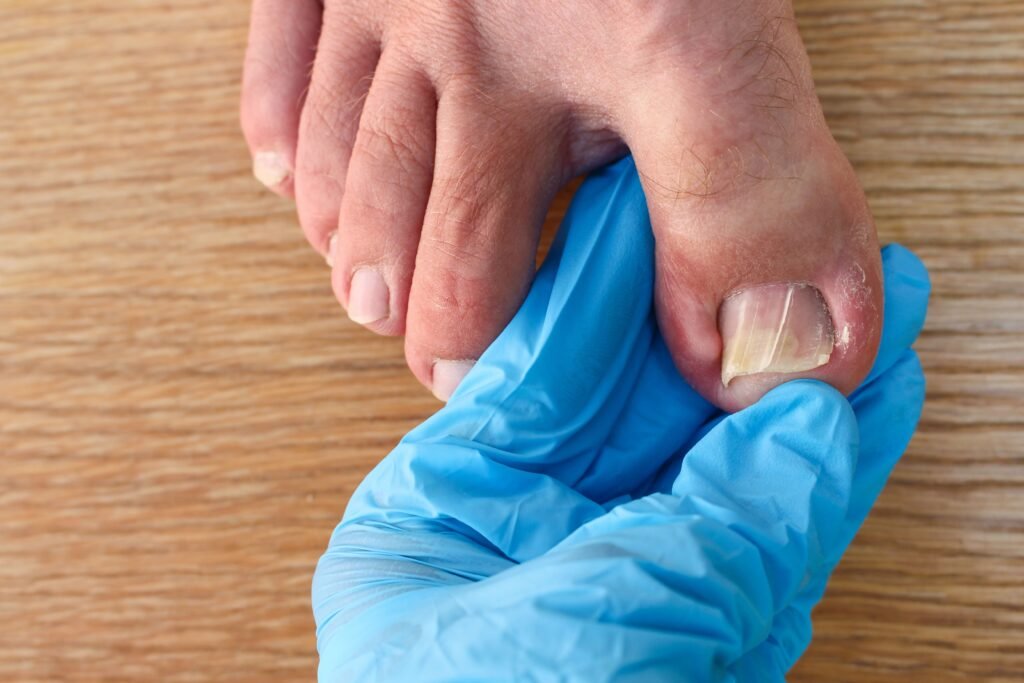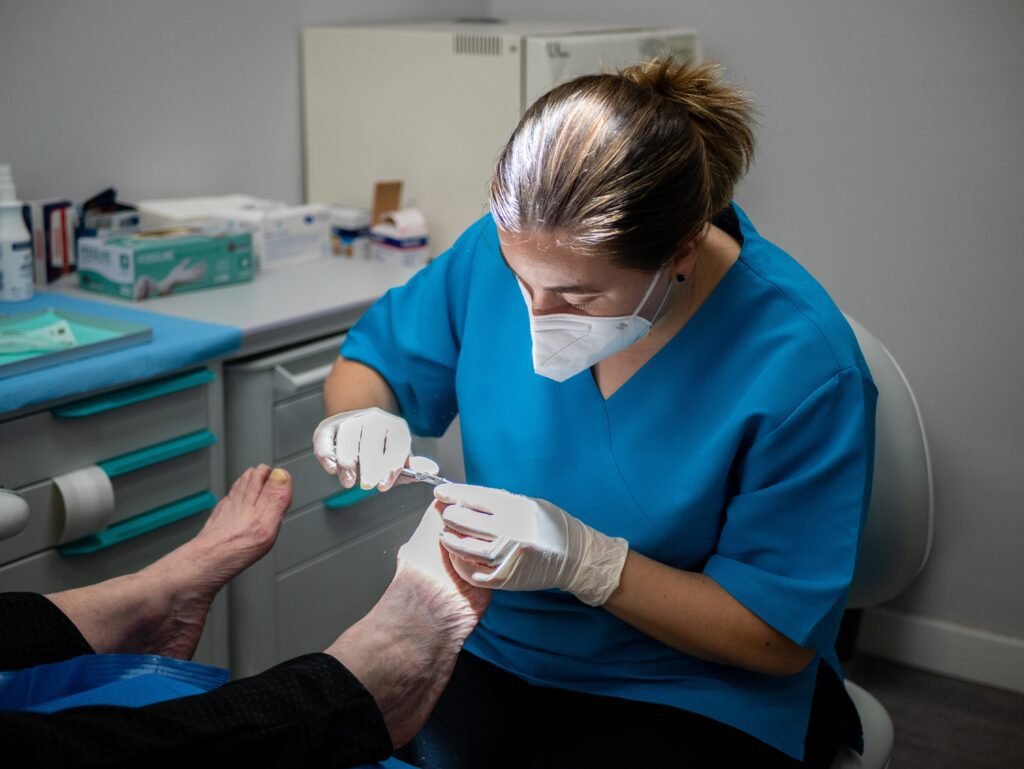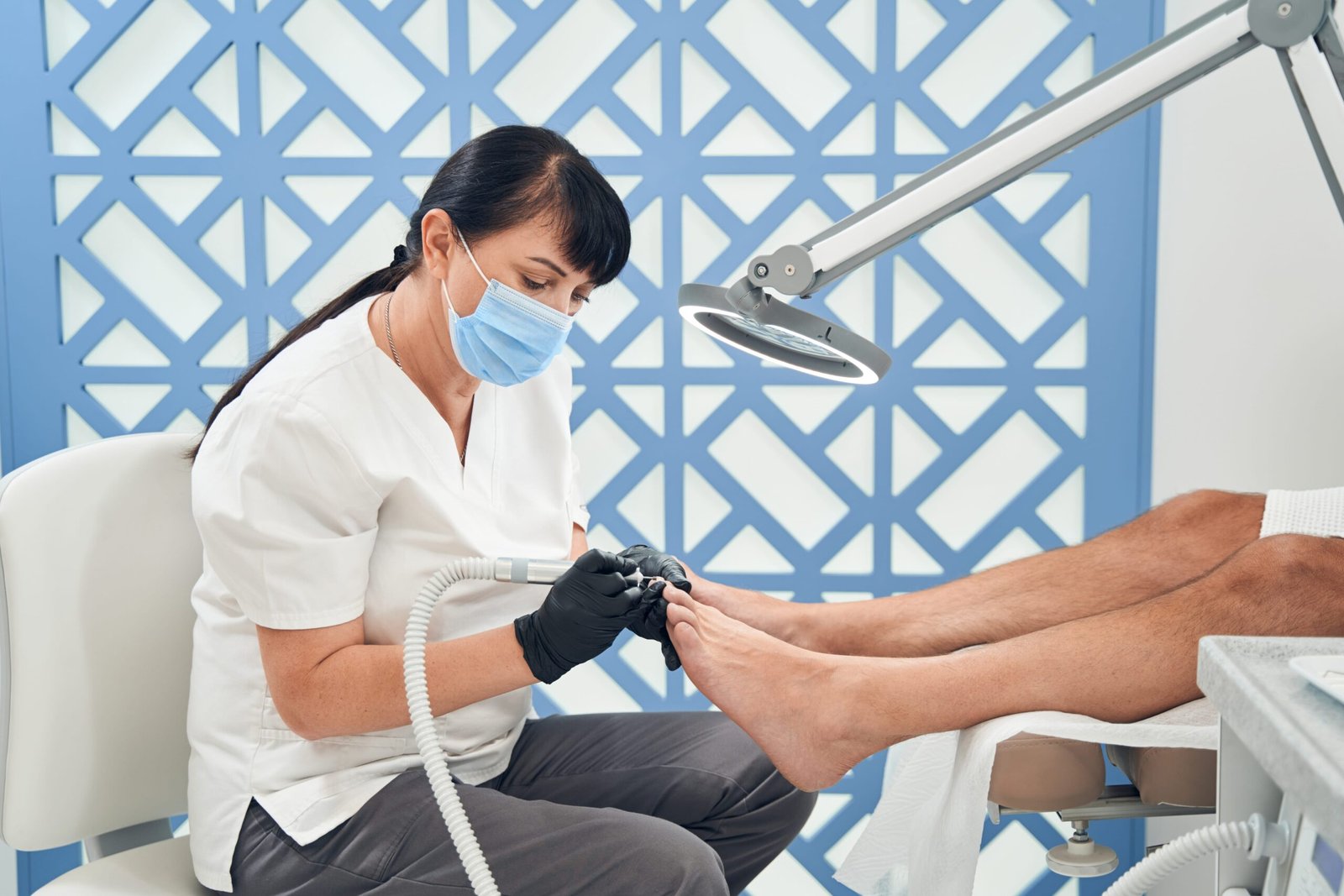Ever had that annoying pain in your toe that just won’t quit? Welcome to the world of ingrown toenails, where your toenail decides to play hide-and-seek with your skin. Usually, it’s the big toe that bears the brunt. Instead of growing out, the toenail grows sideways into the skin, causing irritation, redness, swelling, and, in some cases, infection. your first reaction should start with some home remedies for ingrown toenails.
most of the time that’s all we need, before we check our options, let’s see what we are dealing with.

The leading causes of ingrown toenail
This little toe fiasco can stem from a variety of causes:
cutting toenails too short, cutting toenails at an angle
Another red flag. If you’ve ever stubbed your toe or dropped something on it, that trauma might be to blame.
Wearing shoes that are too tight.
Excessive sweating (hyperhidrosis).
And let’s not forget about genetics and health conditions like diabetes or poor circulation.
These factors can make you more prone to this toe trouble.
Home Remedies for ingrown toenail
The discomfort of an ingrown toenail usually starts as a subtle throbbing sensation along the edge of the affected toenail, gradually intensifying into a persistent ache accompanying each step. That gives you the time to treat that quickly at home with these home remedies for ingrown toenails.
Epsom Salt Soaks:
This isn’t just an old wives’ tale. A warm foot bath with Epsom salt can work wonders. The salt reduces swelling and softens the skin, making it easier for the nail to grow out properly. Plus, it’s a nice way to unwind after a long day. Soak for about 20 minutes, then dry your feet thoroughly. Follow up with an antibacterial cream to keep infections at bay.
Apple cider vinegar
It’s another excellent remedy for almost everything, including ingrown toenails. It has antiseptic, anti-inflammatory, and pain-relieving abilities.
To try this remedy:
- Get warm water in a basin with 1/4 cup apple cider vinegar.
- Soak the affected foot for up to 20 minutes every day if possible.
- Rinse and dry your feet thoroughly after soaking.
Proper Toenail Trimming:
It’s all about technique. Use a clean, sharp pair of toenail clippers. Cut your nails straight across, avoiding any rounding at the corners. Keep them at a moderate length – not too short or long. This simple habit can prevent a whole lot of drama.
Comfortable Footwear:
Your shoes should give your toes room to breathe. Tight shoes can press the nail into the skin, setting the stage for an ingrown toenail. Also, keep your feet dry and clean, especially if you’re active or prone to sweaty feet. Bacteria and fungus love a moist environment.
Tea Tree Oil:
Known for its antiseptic properties, a dab of tea tree oil on the affected area can help keep infection at bay. Just mix it with a carrier oil like coconut oil to avoid irritation.
Cotton Ball Technique:
After soaking your feet, try tucking a small piece of cotton under the ingrown edge of the nail. This can help guide the nail to grow above the skin’s edge. Change the cotton daily to maintain hygiene.
If home remedies for Ingrown Toenails didn’t help that much, there are more options that help improve your arsenal.

Over-the-counter treatments
Along with using Home Remedies to cure your Ingrown Toenail, Over-the-counter antiseptic ointment or cream can promote healing and help reduce inflammation and the risk of infection.
Some of these these ointments are:
neomycin (Neosporin)
mupirocin (Bactroban)
bacitracin/polymyxin B (Polysporin).
Apply the ointment to the affected toenail following the manufacturer’s instructions.
To prevent infection, it’s important to treat ingrown toenails as soon as they occur. Mild cases may require minor treatment with home remedies or even using some over-the-counter creams. But Serious cases may need medical intervention.
Other ingrown toenail solutions
A toe guard: it protects against ingrown toenails by padding the area.
Toe guards come in two different styles: rings that fit around the ingrown nail area or a covering that goes over the whole toe.
Some brands come with a soothing gel that helps soften toenails for easy trimming.
Toe bands: are narrow pieces of plastic that hold the toe in place and protect the skin while the nail grows back. They can treat and stop ingrown toenails.
They can be bought online and in some drug stores.
When to See a Doctor
Sometimes, home remedies just don’t cut it. If you notice excessive redness, pus, severe pain, or swelling, it’s time to see a healthcare professional. These symptoms might indicate an infection that requires medical intervention. Your doctor may prescribe oral antibiotics for a severe ingrown toenail infection that doesn’t respond to other remedies and treatments. Oral antibiotics help reduce pain and swelling while also fighting infection.
In some cases, part of the nail may need to be removed. In other severe cases, the nail has to be removed completely. And only a medical professional can do these procedures.
After surgery
After surgery, the doctor will send you home with a bandage on your toe. To let your toe heal properly, keep your foot elevated for the next two to three days, and avoid wearing tight shoes.
As much as possible, try not to move much, the bandage is generally taken off two days later. Your doctor will tell you to wear shoes with open toes and soak in salt water daily until your toe heals. In addition, you will be given painkillers and medicines to keep you from getting an infection.
If a part of the toenail is removed, it will grow back in a few months. But a toenail can take over a year to grow back after being removed completely.
If you don’t treat an ingrown toenail infection, it can spread to the bone in your toe. An infection in the toenail can also cause foot ulcers open sores that cut off blood flow to the infected area. Where there is an illness, tissue can break down and die.
If you have diabetes, a foot problem might get worse. As a result of the lack of blood flow and nerve sensitivity, even a small cut, scrape, or ingrown toenail can get infected very quickly. If you have diabetes and are worried about getting an ingrown toenail infection, you should see your doctor right away.

Preventive Measures for Healthy Toes
Regular Foot Care: Wash and dry your feet daily. Moisturize, but keep the area around your toenails dry.
Proper Nail Care: Invest in a good pair of toenail clippers. Cut straight across and go only a little short.
Shoe Selection: Roomy and comfortable shoes are a must. Especially if you’re on your feet often, choose footwear that doesn’t squeeze your toes.
Watch Your Step: Be mindful of foot injuries. Protect your feet when you’re active, and treat any toe injuries promptly.
Keep in mind
Dealing with an ingrown toenail is no picnic, but with the proper care, a bit of know-how, and a bit of home Remedies, you can keep your toes in tip-top shape. Remember, if home remedies aren’t helping or if you suspect an infection, don’t hesitate to consult a healthcare professional. So take these tips to heart; your feet will thank you in the long run!












